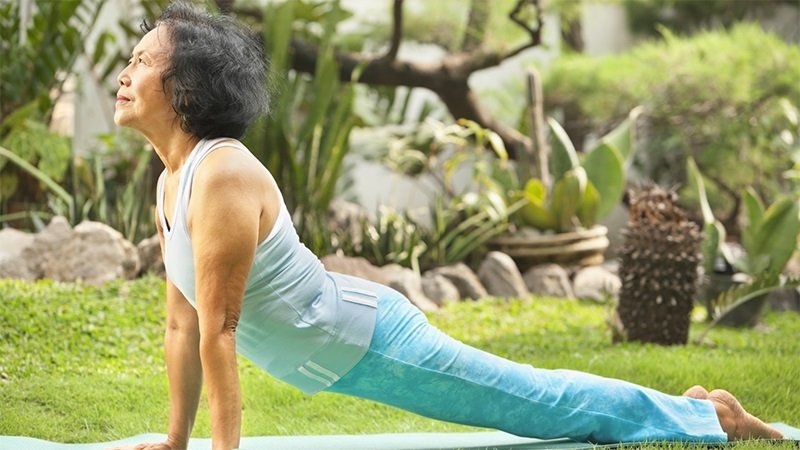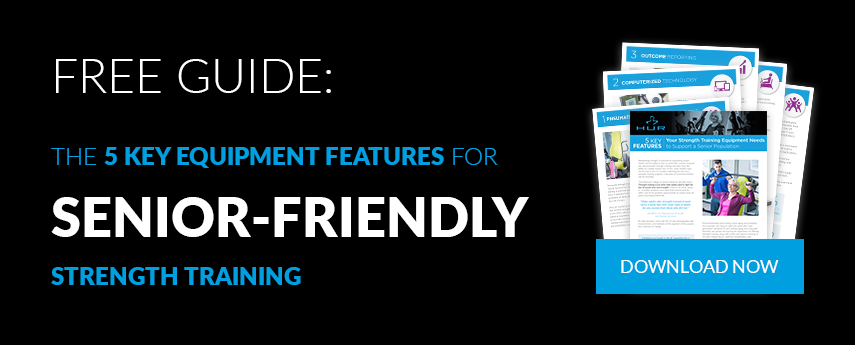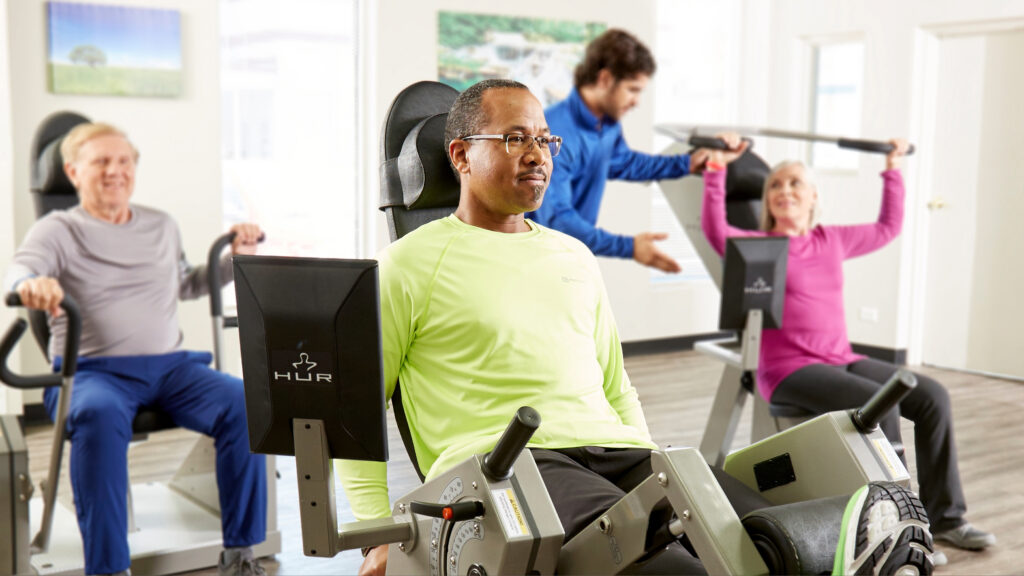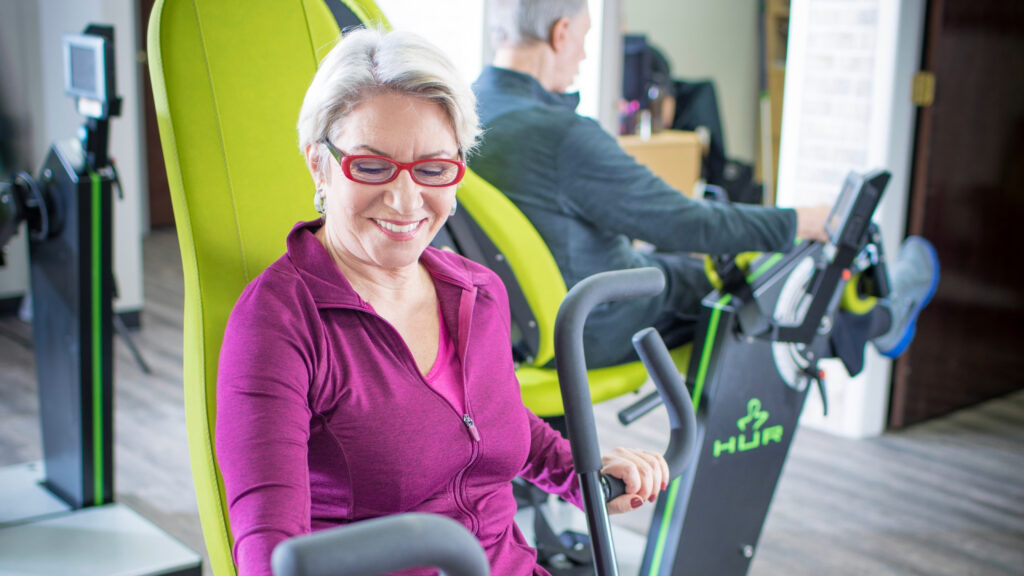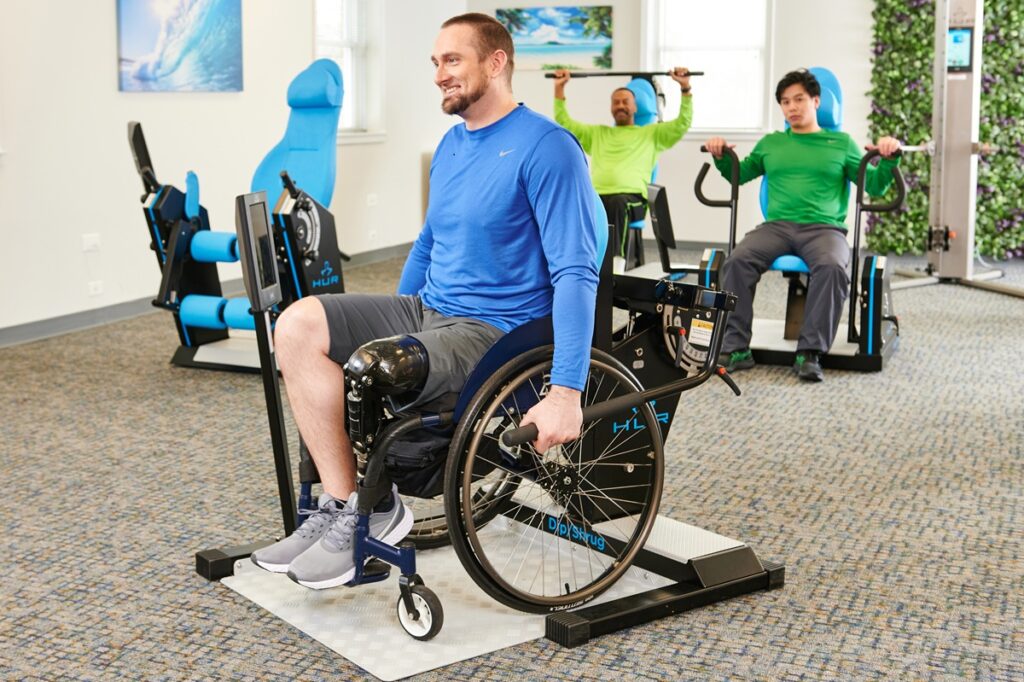How to Encourage Seniors to Engage in a Core Strength Training Routine
As we age, it’s increasingly important to focus on core strength. The natural deterioration of core muscle tissue actually begins as early as our mid-30s. We might not notice it then, but without regular resistance training, core strength will likely have declined to the point where it’s making daily life more difficult by the time we reach 50.
Without regular strength training, core muscle fibers shrink and become less flexible. Since the abdominal muscles act as an anchor for our spine, when they are weak, we are more susceptible to injury and back pain. The problem can be compounded if we’re carrying around excess weight, have poor posture, or are afflicted with an illness such as arthritis or osteoporosis.
Dr. Stuart McGill PhD, Professor of Spine Biomechanics at the University of Waterloo, Canada, writes in an article for the National Strength and Conditioning Association: “Having worked with people who suffer from back pain and high-performance athletes for over 30 years, I am often asked to choose the most influential variable that links pain and performance. My response would be an under-performing core.”
For care professionals and trainers working with older adults, the importance of core strength is not exactly new news. But do your clients understand – really understand – how important it is to engage in regular resistance training aimed at strengthening their core?
For anyone recovering from a fall or dealing with daily back pain, there is no need to convince them that a strong core is important. The challenge is convincing those who feel healthy and independent that it’s important to spend time every week training their core muscles. This group may not yet feel the risk, but it’s there. One thing that can help is a realistic understanding of what core strength and stability really mean. And, most importantly, why it’s important to invest time and energy into maintaining it.
Core Strength and Stability
It’s important for older adults to understand the impact that strength and stability in core muscles have on their quality of daily life. As the central linking point between the lower and upper body, core muscle strength affects how we lift, reach, turn, and bend. If these muscles are allowed to deteriorate and weaken, just standing up straight will become a challenge, and the risk of falling goes through the roof.
Likewise, the stability of core muscles impacts the ability to keep the spine supported during any given activity. Walking across a room, swinging a golf club, playing with grandchildren, shoveling a driveway, or pushing a shopping cart - of these activities require core stability. Without it, independent life becomes more difficult, and there is a high risk of injury. In other words…
The core muscles impact the way you move in every capacity. So, if you want to keep moving, you’ve got to take care of them.
Core Strength Involves More than the Abdominal Muscles
It’s also important that older adults understand that the “core” is more than just the abdominal muscles. Core muscles include the entire torso - the rectus abdominus (the front stomach muscles), the internal and external obliques (the muscles running along our sides), the transvers abdominus (the layer of muscle surrounding the spine), plus the muscles of the hips and the lower back.
When all the muscles in the core are strong, they support and stabilize the spine, making everyday movement easier. But, perhaps most importantly, a strong core makes us less susceptible to balance related falls.
In the gym, there’s nothing more effective for seniors than a core strengthening program that includes the HUR SmartBalance and Dual-Functioning Abdomen and Back Extension. Engineered specifically for older adults, both machines use SmartTouch technology to deliver an exceptionally safe and effective workout.
Outside the gym, there are several exercises that are excellent for strengthening the muscles in the core and can be performed virtually anywhere. Here are 5 of the most effective.
5 Non-Equipment Core Strengthening Exercises for Seniors
1. Wood Chops
This exercise strengthens nearly all the muscles of the core, while also improving balance.
To perform this exercise, stand with your feet slightly wider than shoulder-width and clasp both hands in front of you. Pull both arms up and over to one side of your head. Squat as low as you comfortably can, keeping the knees over the ankles, while swinging your arms diagonally down towards the opposite side of your body, as if you were chopping wood. Stand up out of the squat while raising the arms back up and over to the side of your head. It’s important to keep your abs tight during this entire exercise.
2. Basic Bridge
This exercise strengthens the glutes, hips, lower back, and abdominal muscles and helps keep the spine in proper alignment.
To perform this exercise, lie flat on the floor, facing the ceiling, with legs bent at a 90-degree angle. Bracing your glutes and abdominal muscles, push your hips towards the ceiling, until your body forms a straight line from your knees to your shoulders. Hold for a couple of seconds, then slowly lower your body until almost touching the floor. Repeat 5-10 times.
3. The “Superman”
This exercise targets both lower and upper back muscles, plus the glutes.
Lie face down on the floor and stretch your arms straight out in front of you. Lift your head, one arm, and the opposite leg about 2-inches off the floor. Lower your arm, leg, and head and repeat on the opposite side. While performing this motion, squeeze your glutes and engage your abdominal muscles to support the lower back. To make this exercise easier, raise only the arms, then only the legs, until you build enough strength to raise both at the same time. To make this exercise more challenging raise both arms and both legs at the same time.
4. The Forearm Plank
There are many variations of plank exercises, all of which are aimed at targeting all the muscles of the core at once, plus the arms, thighs, and upper back muscles.
Lie face down on a mat. Place your forearms flat on the mat with elbows aligned below the shoulders, and your arms parallel to your body, about shoulder-width apart. Raise yourself up onto your forearms and toes, contracting your abdominal muscles to support the spine, and keeping your back flat. Hold this position for as long as you can, working up to 60 seconds.
5. The Dead Bug
Even though the name of this exercise is dismal, it’s an extremely effective way to strengthen your entire core, including the oblique muscles that run up and down your sides.
Lie flat on your back on the floor, pressing your lower back into the floor. Raise your legs at a 90-degree angle to the floor and reach your arms straight up toward the ceiling. With the abdominal muscles firmly contracted, slowly lower one foot to the floor while maintaining the bend in your knee. Return to the starting position, and repeat with the other leg. For more of a challenge, reach the opposite arm overhead as you extend the leg. So, as your left leg reaches towards the floor, extend your right arm overhead
Core exercises are most effective when combined with consistent whole-body strength training and cardio
The most effective fitness routine for seniors, of course, builds whole-body strength, flexibility, stability, and endurance. Here are some additional resources for creating a holistic fitness program for older adults:
- Whole-body strength training. These 5 exercises target all the main muscle groups for an effective whole-body strength training routine.
- Flexibility and Functional Training. Here are 4 ways stretching can support active aging and improve the effectiveness of functional training.
- Cardio. Brisk walking is one of the best ways to support heart health and improve cognitive functioning, among other benefits. However, walking ability begins to decline past 65. These 2 techniques can help seniors improve their walking speed.
- Balance and Fall-Prevention. The HUR SmartBalance is the most effective balance training and assessment machine on the market. Learn more about the impact that regular balance training can have on older adults, and how the HUR SmartBalance makes it easier than ever for next-generation rehabilitation and senior living providers to assess risk and provide solutions.
